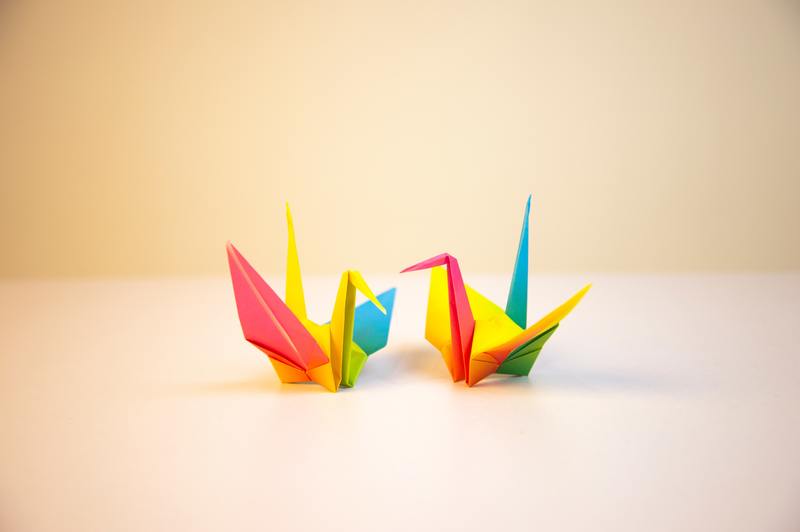Do you know how to remove mold from paper artwork? It seems impossible, right? Well, anything is possible, and there are certainly ways to remove mold from paper artwork.
The presence of mildew in an artwork that you like can sometimes indicate that the painting is in danger of being damaged. Fortunately, there is a method for removing the mildew stains and preserving the artwork.

What Is A Paper Artwork?
Paper artwork has different types and styles, such as origami, paper cuts, and more. With the versatility of paper, it could be used and turned in such creative ways that you could most use it for decorations, gifts, and you may even sell it.
Making a paper artwork always comes with preparing the raw materials suitable for your intended creation. There are different types of papers that you could use for your art, and choosing your kind of paper is very important. These are the different types of documents:
Scrapbook paper
The scrapbook paper is also called patterned paper. Scrapbook paper prints with patterns on one side, and it also has different types such as embossing and glittery. It is best to use in making cards and scrapbooking.
Copy paper
Copy paper is for printing, but it has many uses aside from it. Copy paper is effortless to print on, making it a good choice for printing out designs to cut out or paste. It is best used for folded art paper, origami, quilling, and others.
Card stock
Card stock is the type of paper known for its rigidity, which makes it preferable to make cards, multi-purpose boxes, 3D crafts, and more.
Kraft paper
Kraft paper is ideally suitable for journaling. It is the brown paper you see in the grocery store that comes in different sizes.
It is not a high-quality paper, but it is very appealing and thus makes you want to use it for creativity. Aside from journaling, you can also use kraft paper in making clothing patterns and simple decorative.
Gloss paper
Gloss paper is paper with gloss or high-gloss UV coatings. It is similar to other papers and is pretty much like other papers of the same weight.
The only difference is that gloss paper is more likely to have inks fall out because of its texture, though it still depends on the type of gloss paper you’ll use. You can use gloss paper in publication materials, wedding cards, and others.
Vellum
It is paper made of cotton and is commonly lustrous, making it see-through when held in the light. It is good to use in scrapbooking, tracing invitations, and such.
Metallic paper
Metallic paper has a metallic finishing, making it verifiable by its name. It has features of refined luster, embossing, and even pearlescent shine.
It depends on which type of metallic paper you’ll use. You can use it on invitation cards, envelopes, and others.
Removing Mold From Paper Artwork
Whether you are an art enthusiast, a knowledgeable artist, or a curator, understanding how mold grows is the first step toward preventing your works of art from suffering irreversible damage. Here is a guide to know more about “what does toxic black mold look like.”
Molds in a paper can be challenging to remove, especially on the type of texture your paper has. It is essential to know first the kind of paper and artwork before eliminating molds. Otherwise, it could worsen the damage.
Step #1. Gently use a cotton swab soaked in water, and apply it to minimal molds carefully. Do not rush or dab too hard on the paper because you can tear it. Practice applying gentle strokes because you’re gonna need them a lot in this guide.
Step #2. Dry off the mold first, then use a soft-bristled brush to take off the molds slowly.
Step #3. Use water and 70% rubbing alcohol mixture, and dab it onto the molds. It works best in paper artworks, both minor and significant mold problems. The good thing about this step is that it does not affect your artwork, as long as you first know your papers and paintings.
Step #4. Spray a bit of high-quality germicide products onto your cotton swab and dab it on the molds in your paper artwork. It will help additionally in removing molds. Dry it out.
Step #5. Be wary of the paper and art quality if you use germicide products, water, and alcohol, as the document is fragile that you can easily tear.
To add more information and help you understand how this works, here is what happens when you paint over mold.
Conclusion
These are the information that could best help in aiding you how to remove mold from paper artwork. Additionally, knowing your type of paper and artwork quality is highly required to find which step suits your problem.
Make sure to follow the steps, and read the details carefully. You can also ask for help from professionals if needed.
